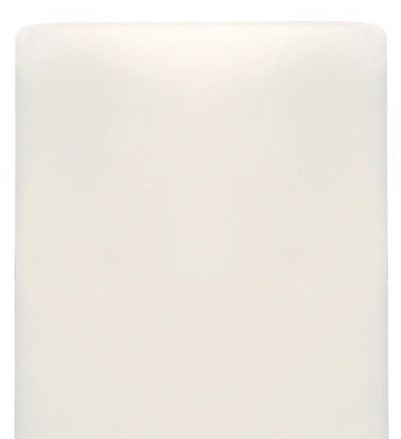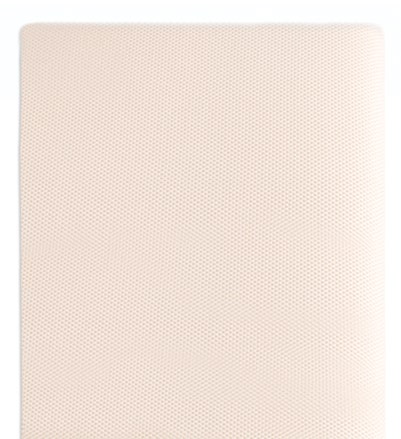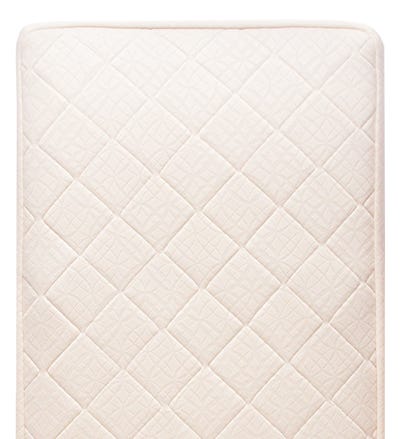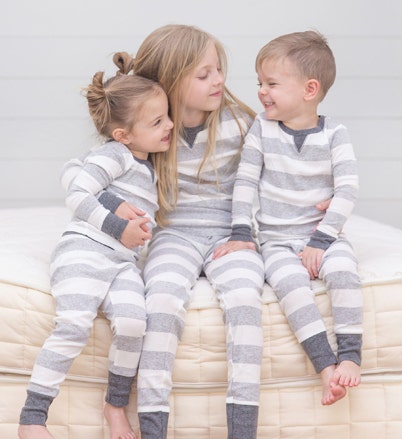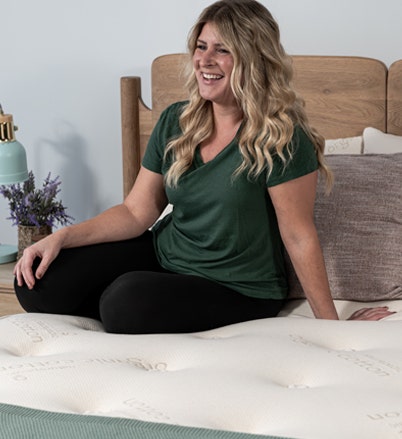Did you know that many everyday products can contain harmful toxins that may be affecting your health and well-being? From hidden chemicals in furniture to irritants in household cleaners, there are many substances we’re often exposed to without realizing the potential risks. In this guide, we’ll highlight 10 common household toxins and offer tips on how to reduce exposure to create a healthier home environment for you and your family.
1. Formaldehyde
Formaldehyde is a toxic gas found in many household items, including furniture, carpets, building materials and paints. Exposure to formaldehyde can cause eye, nose and throat irritation, and prolonged exposure has been linked to more serious health concerns, including respiratory issues and cancer. It’s often released into the air through off-gassing, especially from newer items in the home.
What to do: Choose furniture and products certified as formaldehyde free, like Naturepedic’s products, which are all UL Formaldehyde Free validated and certified to the GREENGUARD® Gold standard. UL/GREENGUARD tests for chemical emissions such as volatile organic compounds (VOCs), formaldehyde and other toxic chemicals. Good ventilation in your home and opting for organic or natural materials whenever possible can also help reduce formaldehyde levels.
2. Phthalates
Phthalates are a group of chemicals used for a variety of purposes like to retain fragrance scents, to soften and strengthen plastic and to help skincare products absorb into the skin. They’re found in products like vinyl flooring, shower curtains and even personal care products such as shampoos and lotions. They’re also commonly found in conventional waterproof crib mattresses and mattress protectors (not ours, though!). Phthalates can act as endocrine disruptors, interfering with hormone function, and have been linked to reproductive and developmental problems.
How to avoid: Look for phthalate-free labels when purchasing products, especially personal care items and children’s toys. When it comes to home materials, try to avoid products made from soft plastics.
3. Flame Retardants


Flame retardants are chemicals used in everyday products such as mattresses, couches and electronics to reduce flammability. While they sound protective, many flame retardants have been found to leach into household dust, where they can be inhaled or ingested. These chemicals are linked to developmental delays, endocrine disruption and reproductive harm.
Choose safer options: Select products made with natural flame barriers instead of chemical flame retardants. For example, organic mattresses from Naturepedic pass flame standards without fire retardants or chemical additives, keeping you safe without the risk of exposure.
4. BPA (Bisphenol A)
BPA is a chemical commonly found in plastic containers and the lining of canned foods. Research has shown that BPA can mimic estrogen in the body, potentially leading to hormone imbalances and developmental issues, especially in children.
Reduce exposure: Opt for BPA-free containers and choose canned goods that advertise BPA-free linings. Switching to glass, stainless steel or other BPA-free materials for food storage can also help reduce your exposure.
5. Synthetic Pesticides
Pesticides are used in many homes and gardens to control insects and weeds, but these chemicals often contain toxic ingredients that can linger in the environment and affect both human and animal health. Certain pesticides have been linked to neurological issues, developmental delays, and an increased risk of chronic illnesses like cancer.
Healthier alternatives: Choose organic produce whenever possible to minimize synthetic pesticide exposure in your diet. For home and garden use, explore natural pest control solutions like essential oils, diatomaceous earth or simply using physical barriers. Lastly, opt for GOTS certified organic products in your home, which adhere to the Global Organic Textile Standard’s strict guidance on synthetic pesticides.
6. VOCs (Volatile Organic Compounds)
VOCs are chemicals that evaporate into the air from certain products in a process called “off gassing,” which contributes to indoor air pollution. They’re commonly found in paints, cleaning products, adhesives and air fresheners. Exposure to VOCs can lead to headaches, respiratory irritation and long-term health issues, particularly affecting those with asthma or allergies.
Limit exposure: Select low-VOC or VOC-free paints and products for your home to reduce exposure. Regularly airing out rooms and improving ventilation also helps lower the concentration of VOCs indoors.
7. Triclosan


Triclosan is an antibacterial and antifungal agent found in some soaps, toothpastes and personal care items. Although it was once widely used to kill germs, concerns over its safety have grown due to its potential to contribute to antibiotic resistance and its ability to disrupt hormones.
What to do: Use triclosan-free personal care products and stick with traditional soap and water for effective cleaning. Many natural soaps and hygiene products are just as effective without the potential risks. Look for products with the EWG VERIFIED® seal to ensure chemical safety.
8. Perfluorinated Chemicals (PFCs)
PFCs are a group of chemicals used in non-stick cookware, water-resistant clothing, waterproof mattresses (but again, not ours!) and stain-resistant furniture. While they offer convenience, they persist in the environment and in the human body, and studies have linked PFCs to liver damage, immune system problems and developmental delays.
Avoid them: Look for PFC-free cookware, such as ceramic or stainless steel, and choose natural fabrics for clothing and home textiles. Avoid products that boast water- or stain-resistant properties unless those products are GOTS certified organic, because they otherwise may contain PFCs.
9. Lead
Although lead has been banned in household paints and pipes since the late 1970s, it’s still a risk in older homes. Lead exposure, especially in children, can cause developmental delays, behavioral issues and neurological damage.
Be cautious: If your home was built before 1978, consider having it tested for lead, particularly if you’re planning renovations. Use lead-free materials when updating plumbing or doing home improvements.
10. Artificial Fragrances


Artificial fragrances, found in everything from air fresheners and candles to cleaning products, are often made up of a cocktail of undisclosed chemicals that can cause allergies, headaches and respiratory issues. Many artificial fragrances are also linked to hormone disruption.
Switch to natural options: Look for products labeled as fragrance-free or choose those made with essential oils instead of synthetic scents. (Again, the EWG VERIFIED mark is always a safe bet when shopping for cleaning products, personal care products and even mattresses). Reducing the use of scented products can help create a cleaner, healthier air quality in your home.
Find more tips on maintaining a low-tox home environment on our Organic Living Blog!
 BABY
BABY  KIDS
KIDS  ADULT
ADULT  LEARN
LEARN  STORES
STORES 
